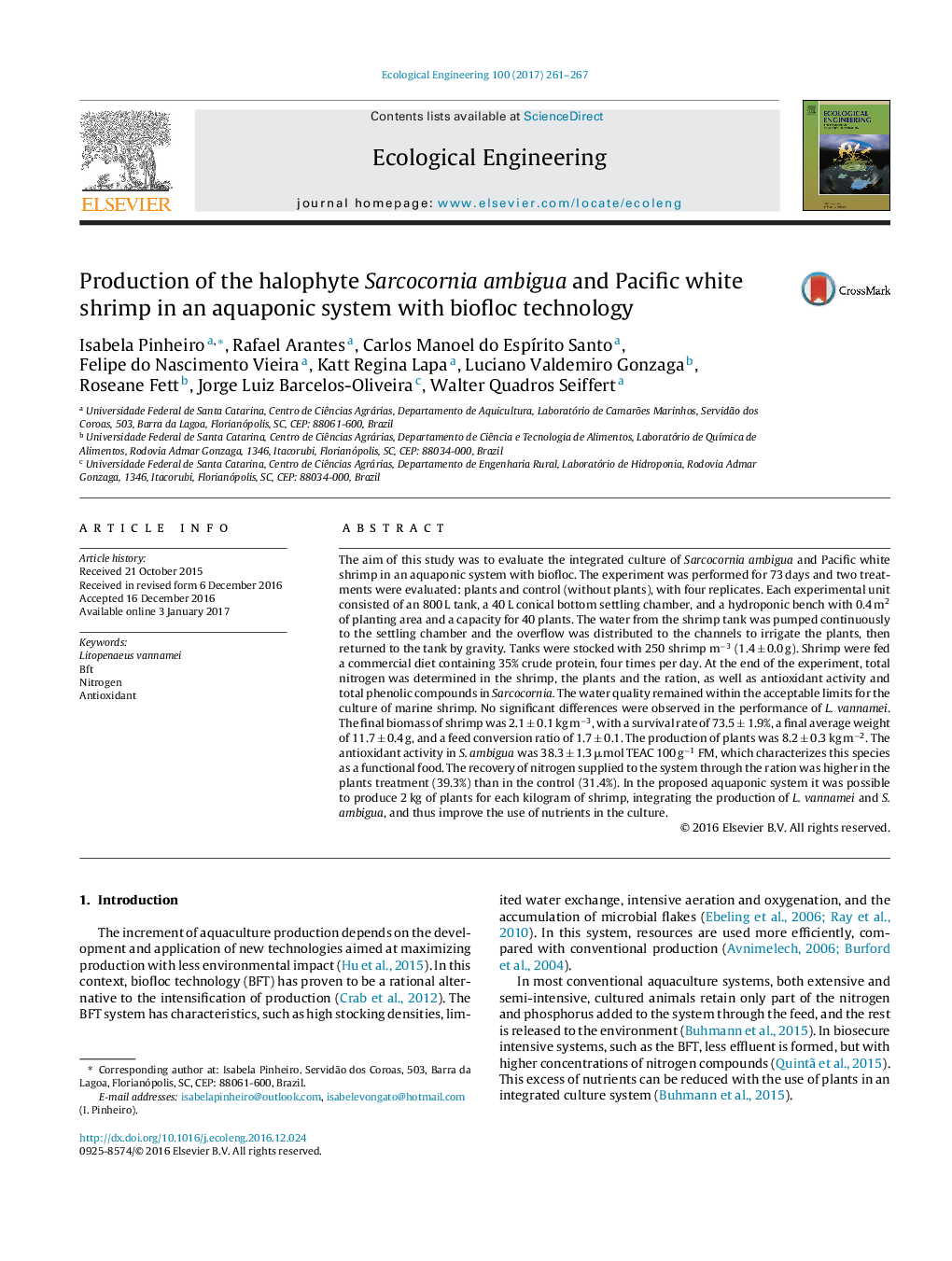| کد مقاله | کد نشریه | سال انتشار | مقاله انگلیسی | نسخه تمام متن |
|---|---|---|---|---|
| 5743728 | 1617999 | 2017 | 7 صفحه PDF | دانلود رایگان |

- Shrimp and S. ambigua aquaponic system produce 2Â kg of plants per kilogram of shrimp.
- Aquaponic system increases in 25% the efficiency of nitrogen assimilation.
- S. ambigua produced in aquaponic system is a promising source of natural antioxidants.
The aim of this study was to evaluate the integrated culture of Sarcocornia ambigua and Pacific white shrimp in an aquaponic system with biofloc. The experiment was performed for 73 days and two treatments were evaluated: plants and control (without plants), with four replicates. Each experimental unit consisted of an 800 L tank, a 40 L conical bottom settling chamber, and a hydroponic bench with 0.4 m2 of planting area and a capacity for 40 plants. The water from the shrimp tank was pumped continuously to the settling chamber and the overflow was distributed to the channels to irrigate the plants, then returned to the tank by gravity. Tanks were stocked with 250 shrimp mâ3 (1.4 ± 0.0 g). Shrimp were fed a commercial diet containing 35% crude protein, four times per day. At the end of the experiment, total nitrogen was determined in the shrimp, the plants and the ration, as well as antioxidant activity and total phenolic compounds in Sarcocornia. The water quality remained within the acceptable limits for the culture of marine shrimp. No significant differences were observed in the performance of L. vannamei. The final biomass of shrimp was 2.1 ± 0.1 kg mâ3, with a survival rate of 73.5 ± 1.9%, a final average weight of 11.7 ± 0.4 g, and a feed conversion ratio of 1.7 ± 0.1. The production of plants was 8.2 ± 0.3 kg mâ2. The antioxidant activity in S. ambigua was 38.3 ± 1.3 μmol TEAC 100 gâ1 FM, which characterizes this species as a functional food. The recovery of nitrogen supplied to the system through the ration was higher in the plants treatment (39.3%) than in the control (31.4%). In the proposed aquaponic system it was possible to produce 2 kg of plants for each kilogram of shrimp, integrating the production of L. vannamei and S. ambigua, and thus improve the use of nutrients in the culture.
Journal: Ecological Engineering - Volume 100, March 2017, Pages 261-267